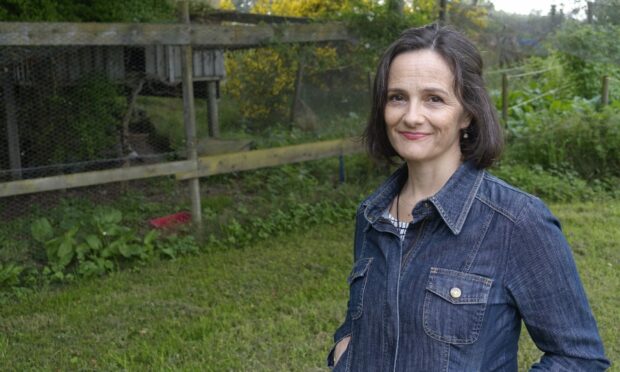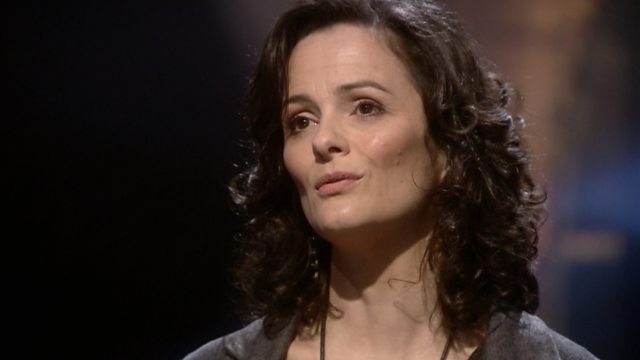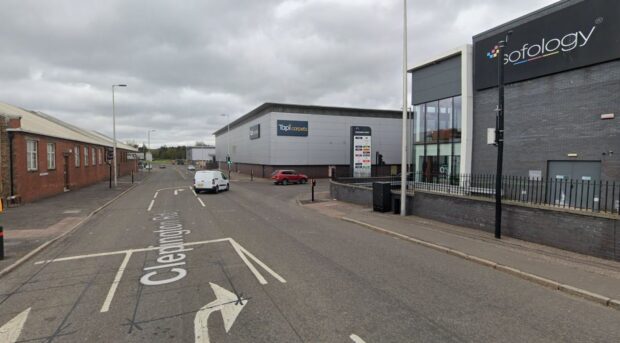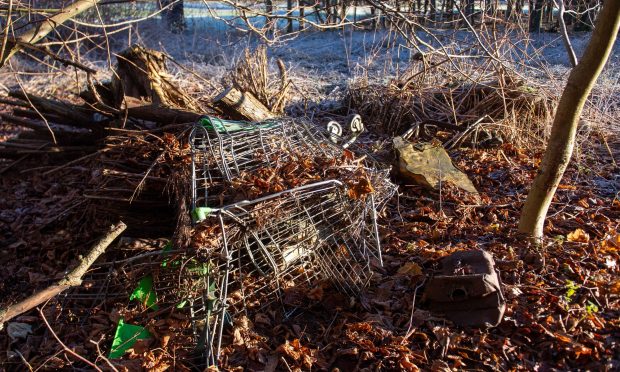Isle of Lewis-raised Gaelic singer Eilidh Mackenzie has close connections with Dundee.
Eilidh and her sisters’ first record Mackenzie was produced by the late Michael Marra in Dundee in 1997 and engineered by fellow Dundonian Ged Grimes.
She worked with Ged again in 2010 then also in 2019 to help with his The Bard’s Tale Live at Celtic Connections.
Eilidh, a mother-of-four whose daughter Peigi was the voice of young Princess Merida in the Disney film Brave, was brought up in a family of Gaelic speakers on Lewis – although as the daughter of a non-Gaelic speaking Dundonian mother, Gaelic was not her first speaking language.
Gaelic was, however, her first singing language and, from her family’s now base on the Black Isle, she has fond memories of being with her family as a wee girl, right up to her student years, sitting around the Christmas tree on Christmas Eve singing carols and Christmas songs.
‘Quieter cousin’ to Hogmanay
“Christmas was, until very recently, the quieter cousin to Hogmanay in the Gaelic tradition,” says Eilidh, whose day job is Feisgoil manager at Feisean nan Gaidheal – a Gaelic arts organisation which delivers 47 community Feisean throughout Scotland.
“In fact, the old Celtic New Year – Oidhche Challainn – celebrated early January, was a time of great socialising for boys and young men and this tradition carried on into the more modern New Year where folk visited entire villages in the one night and ended up in a particularly hospitable house until the wee small hours.
“This was very much the case in my home village of Gress, on the Isle of Lewis, especially among the young folk when I was a teenager and girls were beginning to be encouraged into what had been traditionally a male celebration.
“This is probably why there are not a huge number of Scottish Gaelic Christmas songs.
“There are some religious hymns and such like, as well as translations of the more well-known Christmas carols like Silent Night (Ciùin an Oidhche), which of course, is itself a translation of the original German Stille Nacht.
“There is, however, one popular carol that is Gaelic to the core – Leanabh an Àigh, known in English as Child in a Manger as well as Morning has Broken.
“It was the work of Mary Macdonald from Mull (1789-1872) and is still sung to the tune ‘Bunessan’, named after the village on the island.
“There is a lovely version sung by Arthur Cormack made all the more special by the fact that the bard herself, Mary Macdonald, is an ancestor of Arthur’s wife, Shona Macdonald.”
What are Eilidh’s favourites?
Eilidh, who attended the 20th anniversary Scots Trad Music Awards at Dundee’s Caird Hall a few weeks ago, said another traditional favourite Gaelic carol which exists as far as she knows only in Gaelic is Tàladh Chriosta (Christ Child’s Lullaby).
Secular Gaelic songs celebrating the festive season are not plentiful but, particularly through Gaelic medium education, they are beginning to appear.
“I can’t see past Stille Nacht/Silent Night/Ciùin an Oidhch’,” says Eilidh when asked about her favourite festive song, “although my favourite song of the season is Winter Song by Sara Bareilles and Ingrid Michaelson.”
Eilidh adds that she used to work as music tutor for the Gaelic school in Inverness and every year they’d put on a Christmas concert or show. She usually wrote some Gaelic songs for that.
“The one that seems to have stuck around is not an original song,” she adds: “but my Gaelic response to the Leonard Cohen classic ‘Hallelujah’.
“I used his melody and chorus to base some verses around a Christmas theme and it’s so lovely for me to hear children and other Gaelic singers throughout Scotland still sing ‘Alleluia’ at Christmas time.”
Who is Eilidh Mackenzie?
Born into a family of singers on Lewis, the formative years of Eilidh Mackenzie (married name Barker) were immersed in close harmony singing among her father’s family – Gaelic songs interspersed with a good dose of covers of American acts like Peter, Paul and Mary.
After studying for a degree in Music and Celtic Studies at the University of Glasgow, Eilidh was awarded a scholarship to study and teach at St Francis Xavier University, Nova Scotia.
At the age of 20 she won the An Comunn Gaidhealach Gold Medal and in 2010 was the recipient of the MGAlba Scots Trad Award Gaelic singer of the Year.
In the 1990s she performed in the band Mac-talla and still sings alongside two of her sisters in the band Mackenzie.
As well as performing traditional material Eilidh has been writing songs since her teenage years.
In 2009 she released an album of self-penned songs based on the novel Bel Canto by American author Ann Patchett and the following year was commissioned by Blas Festival to write a song cycle based on happy news stories.
The resulting show, Saoghal Sona was broadcast on radio.
She has been tutoring Gaelic song for more than 25 years and in 2005 devised, co-wrote and produced the first ever Gaelic musical. Taigh Màiri Anndra, celebrating the life and work of American folklorist Margaret Fay Shaw.
It was performed by all 99 children at the Gaelic school in Inverness to a capacity audience in Eden Court’s Empire Theatre.











